Post translational modification may include information
Home » modification » Post translational modification may include informationYour Post translational modification may include images are ready in this website. Post translational modification may include are a topic that is being searched for and liked by netizens today. You can Get the Post translational modification may include files here. Get all free images.
If you’re looking for post translational modification may include pictures information linked to the post translational modification may include interest, you have visit the ideal site. Our website frequently provides you with hints for refferencing the maximum quality video and image content, please kindly hunt and find more enlightening video content and images that fit your interests.
Post Translational Modification May Include. This regulated process makes different mRNAs. Formation of exons and introns. Post-translational modification refers to the covalent and generally enzymatic modification of proteins following protein biosynthesis. OR The chemical modifications that take place at certain amino acid residues after the protein is synthesized by translation are known as post-translational modifications.
 Pin On Refer Back To From pinterest.com
Pin On Refer Back To From pinterest.com
Post translational modification PTM is the chemical modification of a protein after its translation. The protein post translational modifications play a crucial role in generating the heterogeneity in proteins and also help in utilizing identical proteins for different cellular functions in different cell types. OR The chemical modifications that take place at certain amino acid residues after the protein is synthesized by translation are known as post-translational modifications. Post-translational modification refers to the covalent and generally enzymatic modification of proteins following protein biosynthesis. While the role of functional domains of the VP13 proteins and receptor footprints are known for certain AAV serotypes AAV16 9 9 11 23-25 the impact of the posttranslational modifications PTM of the capsid proteins that may fine tune several aspects of viral infectivity and dictate systemic host response is poorly. A addition of a 5 cap B removal of introns C addition of carbohydrates to.
Post-translational modifications include all of the following except.
Post-translational modifications include all of the following except. Addition of glycine tags. Describe RNA post-transcriptional modification and its purpose Gene expression can be regulated at various stages after an RNA transcript has been produced. Folding of the protein often with the aid of chaperones. Formation of exons and introns. OR The chemical modifications that take place at certain amino acid residues after the protein is synthesized by translation are known as post-translational modifications.
 Source: pinterest.com
Source: pinterest.com
This is one of the most common modifications that occurs in animal cells. This regulated process makes different mRNAs. PTMs are important components in cell signaling as for example when prohormones are converted to hormones. Folding of the protein often with the aid of chaperones. Phosphorylation glycosylation ubiquitination sumoylation protein cleavage and addition of vitaminmineral cofactors.
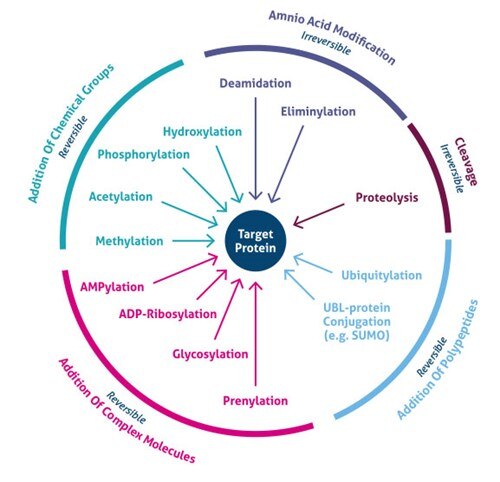 Source: ptglab.com
Source: ptglab.com
Addition of glycine tags. In other words PTMs are chemical modifications of a polypeptide chain that occur after DNA has been transcribed into RNA and translated into protein. Post-translational modifications include all of the following except. A addition of a 5 cap B removal of introns C addition of carbohydrates to. In other words PTMs are chemical modifications of a polypeptide chain that occur after DNA has been transcribed into RNA and translated into protein.
 Source: jbc.org
Source: jbc.org
In other words PTMs are chemical modifications of a polypeptide chain that occur after DNA has been transcribed into RNA and translated into protein. Some transcripts can undergo alternative splicing. These modifications include phosphorylation glycosylation ubiquitination nitrosylation methylation. Kinases add phosphate groups and phosphatases remove phosphate groups. Folding of the protein often with the aid of chaperones.
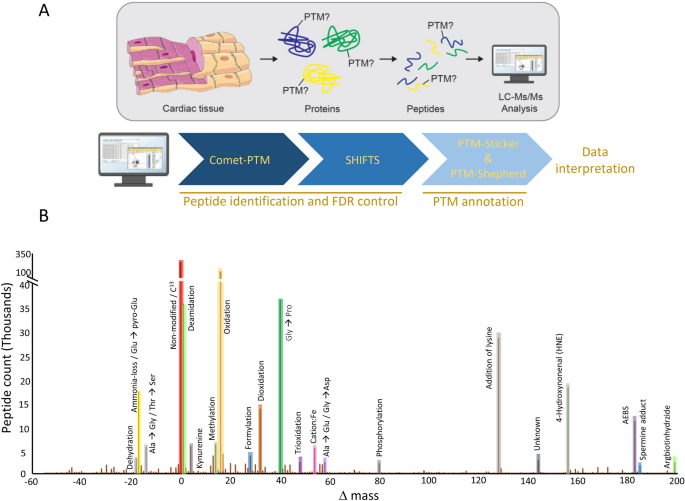 Source: nature.com
Source: nature.com
Posttranslational modification PTM of proteins being one of the later stages in protein biosynthesis refers to the reversible or irreversible chemical changes proteins may undergo after translation. Shortly after or even during synthesis the residues in a protein are often chemically modified by post-translational modification which alters the physical and chemical properties folding. While the role of functional domains of the VP13 proteins and receptor footprints are known for certain AAV serotypes AAV16 9 9 11 23-25 the impact of the posttranslational modifications PTM of the capsid proteins that may fine tune several aspects of viral infectivity and dictate systemic host response is poorly. Formation of exons and introns. Posttranslational modification PTM of proteins being one of the later stages in protein biosynthesis refers to the reversible or irreversible chemical changes proteins may undergo after translation.
 Source: pnas.org
Source: pnas.org
Posttranslational modification PTM of proteins being one of the later stages in protein biosynthesis refers to the reversible or irreversible chemical changes proteins may undergo after translation. A removal of introns B addition of a 5 cap C addition of a poly-A tail D addition of carbohydrates to form a glycoprotein E removal of exons Answer. Post-translational modifications include all of the following except. Post-translational modifications can occur on the amino acid side chains or at the proteins C- or N. Post-translational modification may include formation of exons and introns.
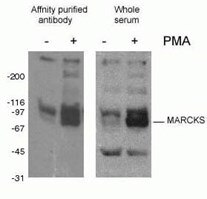 Source: ptglab.com
Source: ptglab.com
102 Post-translational modifications of proteins may include which of the following. A removal of introns B addition of a 5 cap C addition of a poly-A tail D addition of carbohydrates to form a glycoprotein E removal of exons Answer. Post-translational modifications of proteins may include which of the following processes. Folding of the protein often with the aid of chaperones AND removal of the signal sequence. It is used to regulate biological activity.
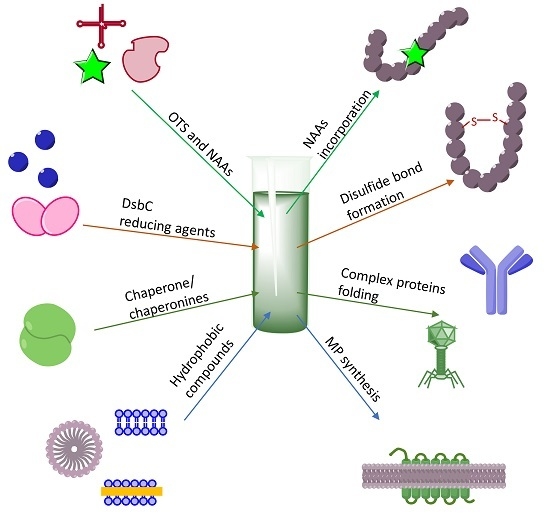 Source: mdpi.com
Source: mdpi.com
Folding of the protein often with the aid of chaperones. Phosphorylation glycosylation ubiquitination sumoylation protein cleavage and addition of vitaminmineral cofactors. This regulated process makes different mRNAs. A addition of a 5 cap B removal of introns C addition of carbohydrates to. Formation of exons and introns.
 Source: onlinelibrary.wiley.com
Source: onlinelibrary.wiley.com
Post-translational modification PTM refers to the covalent and generally enzymatic modification of proteins following protein biosynthesis. The modifications collectively are known as post-translational modifications. Removal of the signal sequence. Post-translational modifications can occur on the amino acid side chains or at the proteins C- or N. Folding of the protein often with the aid of chaperones.
 Source: pinterest.com
Source: pinterest.com
Removal of the signal sequence. Post-translational modifications of proteins may include which of the following processes. A removal of introns B addition of a 5 cap C addition of a poly-A tail D addition of carbohydrates to form a glycoprotein E removal of exons Answer. OR The chemical modifications that take place at certain amino acid residues after the protein is synthesized by translation are known as post-translational modifications. In other words PTMs are chemical modifications of a polypeptide chain that occur after DNA has been transcribed into RNA and translated into protein.
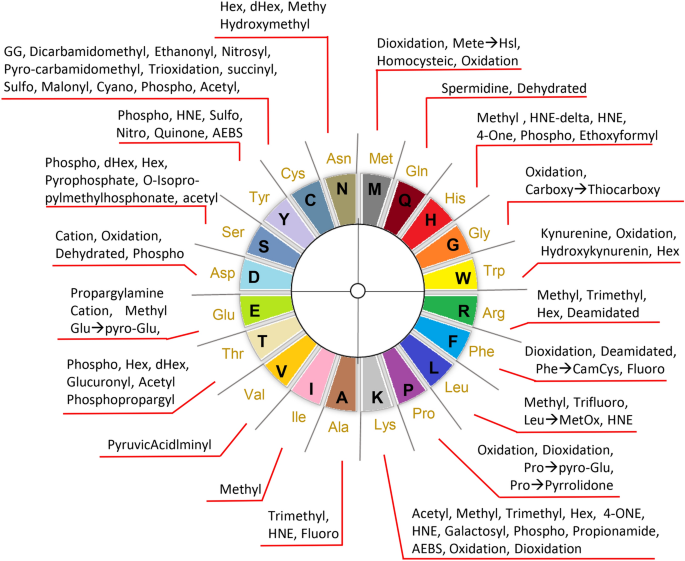 Source: nature.com
Source: nature.com
Post-translational modification refers to the covalent and generally enzymatic modification of proteins following protein biosynthesis. A addition of a 5 cap B removal of introns C addition of carbohydrates to. Kinases add phosphate groups and phosphatases remove phosphate groups. Post-translational modifications are changes to proteins that are made after translation has occurred. Formation of exons and introns.
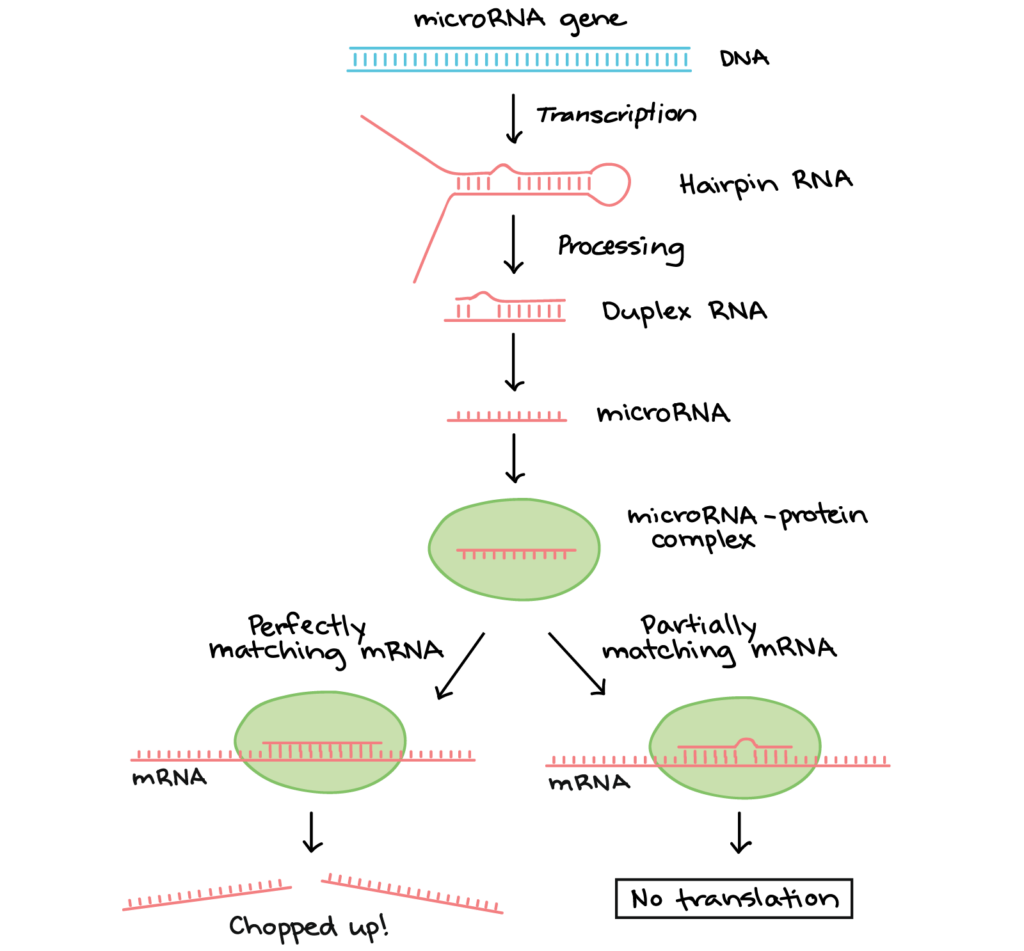 Source: courses.lumenlearning.com
Source: courses.lumenlearning.com
PTMs are important components in cell signaling as for example when prohormones are converted to hormones. Removal of the signal sequence. In other words PTMs are chemical modifications of a polypeptide chain that occur after DNA has been transcribed into RNA and translated into protein. Phosphorylation glycosylation ubiquitination sumoylation protein cleavage and addition of vitaminmineral cofactors. Some transcripts can undergo alternative splicing.
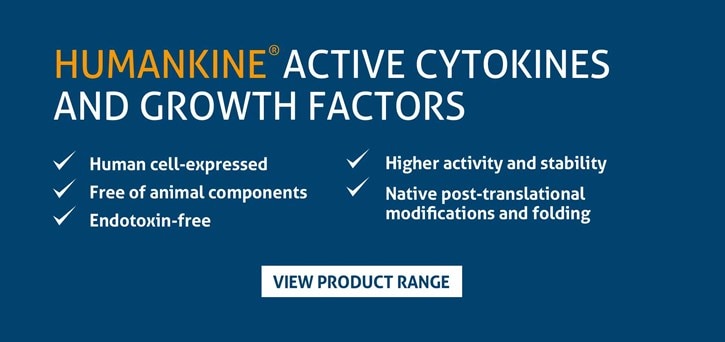 Source: ptglab.com
Source: ptglab.com
Post-translational modifications of proteins may include which of the following processes. Proteins often undergo large conformation changes once they are bound to a phosphate which can either upregulate or downregulate theit activity. PTMs are important components in cell signaling as for example when prohormones are converted to hormones. Addition of glycine tags. Posttranslational modification PTM of proteins being one of the later stages in protein biosynthesis refers to the reversible or irreversible chemical changes proteins may undergo after translation.
 Source: cell.com
Source: cell.com
Proteins often undergo large conformation changes once they are bound to a phosphate which can either upregulate or downregulate theit activity. The modifications collectively are known as post-translational modifications. Post-translational modification refers to the covalent and generally enzymatic modification of proteins following protein biosynthesis. Post-translational modification may include formation of exons and introns. Folding of the protein often with the aid of chaperones AND removal of the signal sequence.
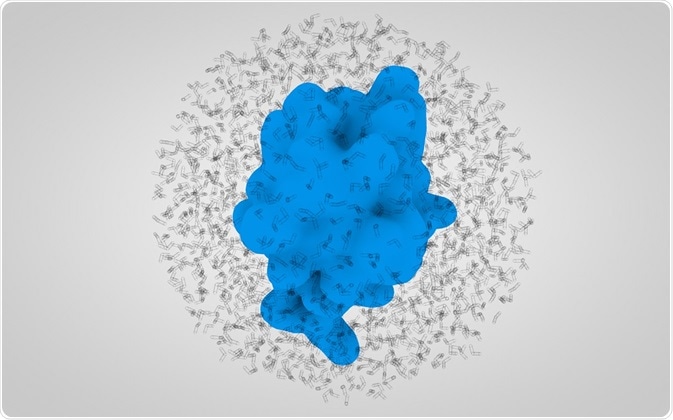 Source: news-medical.net
Source: news-medical.net
Folding of the protein often with the aid of chaperones. The protein post translational modifications play a crucial role in generating the heterogeneity in proteins and also help in utilizing identical proteins for different cellular functions in different cell types. Post-translational modification may include formation of exons and introns. A removal of introns B addition of a 5 cap C addition of a poly-A tail D addition of carbohydrates to form a glycoprotein E removal of exons Answer. The modifications collectively are known as post-translational modifications.
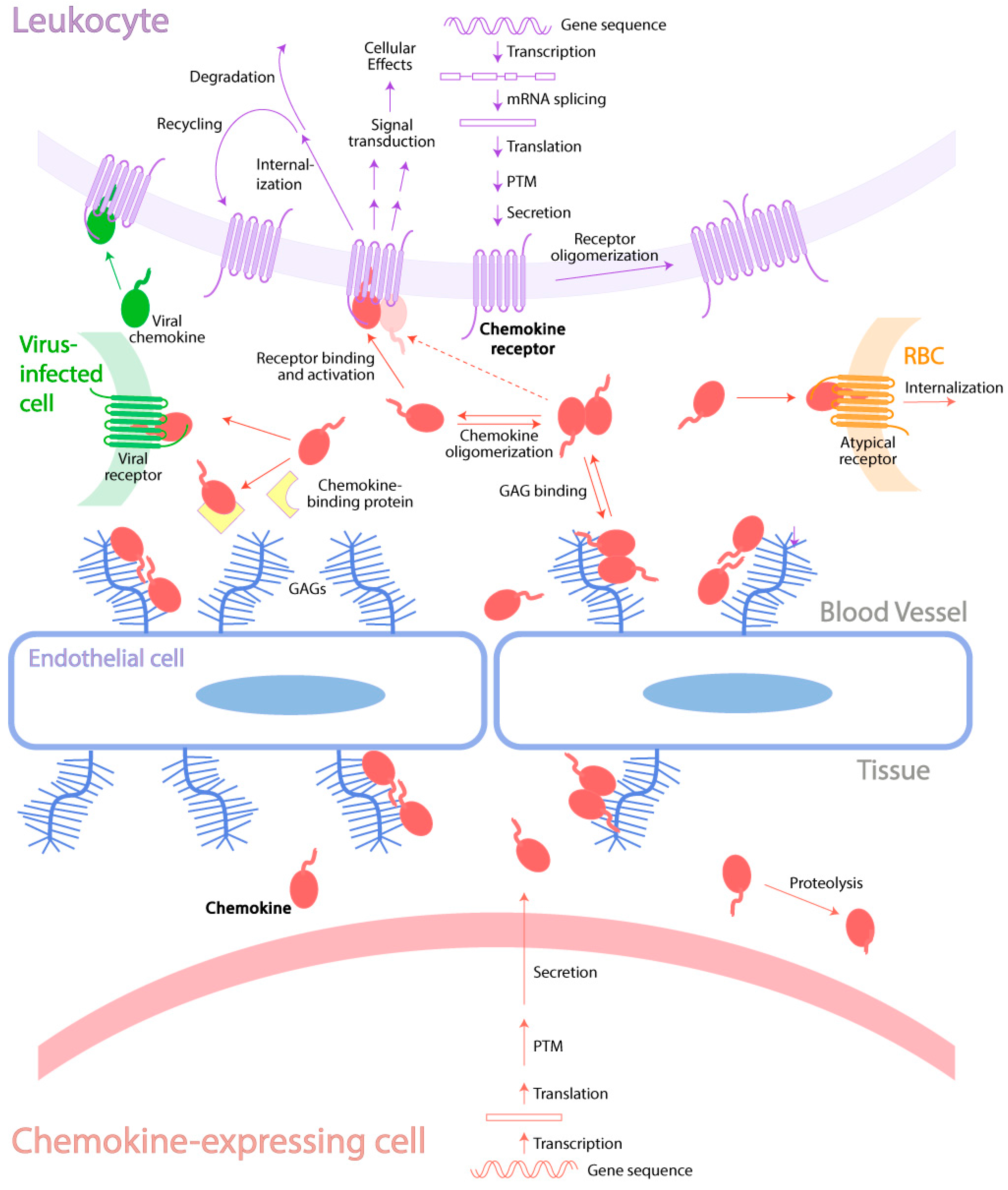 Source: mdpi.com
Source: mdpi.com
A addition of a 5 cap B removal of introns C addition of carbohydrates to. Folding of the protein often with the aid of chaperones AND removal of the signal sequence. Folding of the protein often with the aid of chaperones. Post-translational modifications are changes to proteins that are made after translation has occurred. This regulated process makes different mRNAs.
 Source: onlinelibrary.wiley.com
Source: onlinelibrary.wiley.com
Protein post-translational modifications PTMs increase the functional diversity of the proteome by the covalent addition of functional groups or proteins proteolytic cleavage of regulatory subunits or degradation of entire proteins. Proteins are synthesized by ribosomes translating mRNA into polypeptide chains which may then undergo PTM to form the mature protein product. Removal of the signal sequence. In other words PTMs are chemical modifications of a polypeptide chain that occur after DNA has been transcribed into RNA and translated into protein. Proteins are synthesized by ribosomes translating mRNA into polypeptide chains which may then undergo PTM to form the mature protein product.
Source:
Addition of glycine tags. These are essential for normal functioning of the protein. It is used to regulate biological activity. Folding of the protein often with the aid of chaperones. These modifications include phosphorylation glycosylation ubiquitination nitrosylation methylation.
 Source: pinterest.com
Source: pinterest.com
Removal of the signal sequence. Post-translational modifications can occur on the amino acid side chains or at the proteins C- or N. A addition of a 5 cap B removal of introns C addition of carbohydrates to. 102 Post-translational modifications of proteins may include which of the following. Formation of exons and introns.
This site is an open community for users to submit their favorite wallpapers on the internet, all images or pictures in this website are for personal wallpaper use only, it is stricly prohibited to use this wallpaper for commercial purposes, if you are the author and find this image is shared without your permission, please kindly raise a DMCA report to Us.
If you find this site serviceableness, please support us by sharing this posts to your favorite social media accounts like Facebook, Instagram and so on or you can also bookmark this blog page with the title post translational modification may include by using Ctrl + D for devices a laptop with a Windows operating system or Command + D for laptops with an Apple operating system. If you use a smartphone, you can also use the drawer menu of the browser you are using. Whether it’s a Windows, Mac, iOS or Android operating system, you will still be able to bookmark this website.
Category
Related By Category
- Leatherman modification ideas
- Organizational behavior modification theory ideas
- Seamoth modification station location information
- Custody modification reasons information
- Kak shockwave modification information
- Subnautica cant place vehicle modification station information
- Loan modification while in chapter 13 information
- Behavior modification is based upon the principles of rewards and punishments advanced by ideas
- Modification lawyer information
- Z4 modification information